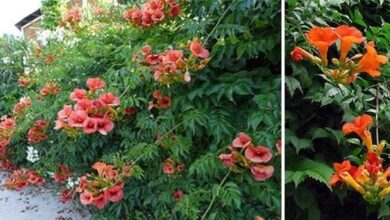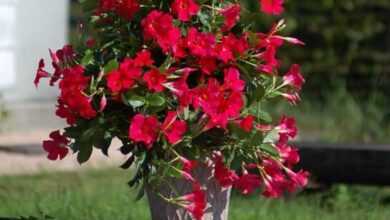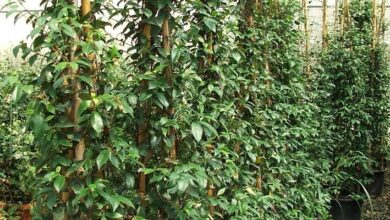False plumbago (Ceratostigma plumbaginoides)

The Cerato plumbaginoides or better known as plumbago false, it is a plant that is characterized by its beautiful purple flowers. It is known by several other names. But that will not be the only thing you know about this plant today.
Today we will give prominence to the false plumbago, so you will know the most relevant aspects and data of this plant. At the end of the article you will know if it is worth having this species in your garden or not.
General data

Its scientific name is Ceratostigma plumbaginoides, but in a vulgar way it is known under the name of false plumbago. It should be noted that there are several types of plumbago, but they all belong to the same family so to speak.
This is a plant with climbing, perennial and herbaceous characteristics, although it is also attributed some shrubby characteristics. So it is not at all rare to see that people acquire this species for their gardens and green spaces.
On the other hand, it is a plant native to Asia, specifically China. The places where it is usually seen growing is more than rocky terrain and cliffs, but it can also be adapted to other environments with similar characteristics.
An interesting fact that you have to know is that the plant managed to be introduced in Europe at the beginning of the 19th century. So it is also often seen a lot in Spanish territory with rocky characteristics.
Features of the plumbaginoides Cerato

It must be recognized that of all the different plumbagos that exist, especially this one in particular, it does not have much to say. So we will mention the characteristics of the plant without much explanation or details.
It can reach a maximum height of 60 cm., And although its growth is quite fast, it can turn any space into something full of life, it also has stems with angles.
They don’t have much shape or design and are highly branched. Also, some of the stems may turn a light reddish color, but at the same time, others may be light green. The stems do not have too many leaves and these can alternate between them and have an ovate shape. Its dimensions are 2-10 x 1-5 cm.
At the end of a stem there may or may not be flowers. Usually 15 to 30 flowers can be found on a single stem, and the dimensions of its flowers are 12 to 18 mm long and have a tubular shape while still in bud shape.
Care
The good thing is that the plant itself does not need much care and we are going to give you the reasons:
Irrigation
Like any other plant, this one does not need large amounts of water, just enough so that the earth around it is not too wet for too long.
Soil type

If you have a soil that simulates that of a rocky mountain or that of its natural habitat, it will be better. But if not, a soil with a well-drained substrate will suffice.
Environment
You can have it under direct sun without problem, in fact, it is the most recommended. It does not support an environment that is too warm but one that is below 27 ° C. On the other hand, it has great resistance to cold environments, but despite this, you have to protect it against the extreme cold of winter.
Basically these are all the care you need to give life to Ceratostigma plumbaginoides. Besides, a fact that we do not mention regarding its flowering, is that the plant will flower at the end of summer and will be like that throughout the fall.
You can have it in a pot or place some vertical and/ or horizontal, since the plant has climbing characteristics. So it will be very good to plant it near a wall that does not look good or use it for rockery.
As a final fact, if you want to have Ceratostigma plumbaginoides in your garden, try to plant it during the fall season, this being the best time of all to do it.




